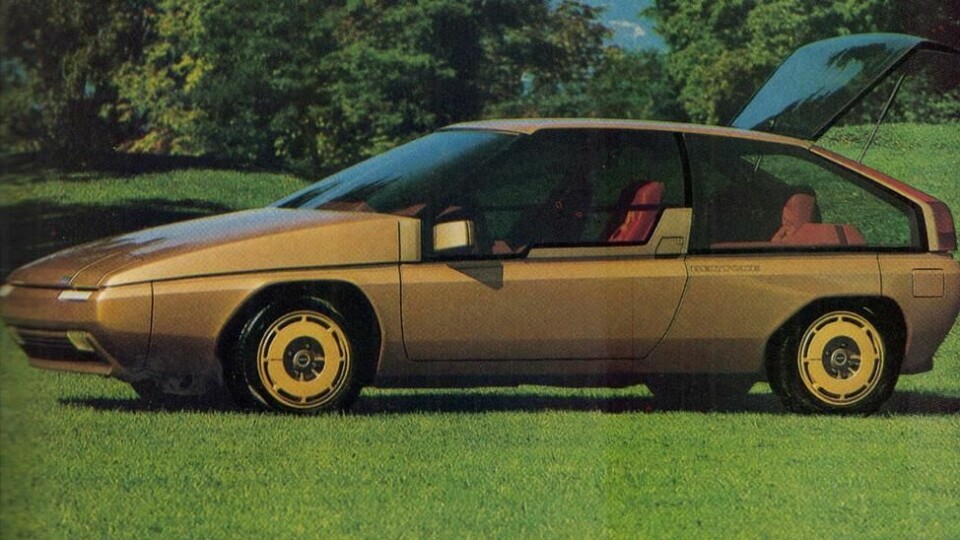
Concept Car of the Week: Mazda MX-81 Aria (1981)
Marc Deschamp’s Mazda MX-81 Aria coupé featured one of the most unusual steering wheels of all time
Frequently concept cars, even if they appear to have emerged from a blank slate, are anchored to the underpinnings of a production car, both to rein in costs and to explore new possibilities for an established model-range. Such was the case when Mazda approached Bertone in 1981, looking for a concept car for its stands at that year’s car shows.

Bertone was given carte blanche on the project, with just one stipulation: the design must use the existing mechanicals of that year’s Mazda 323/GLC, Mazda’s workaday compact model. And under the design leadership of Marc Deschamps, the studio produced a sporty two-door, four-seat coupe that looked nothing like the sedate, boxy 323.

The characteristic Bertone wedge was prominently displayed. The geometry of intersecting, almost-flat surfaces defined the Aria, with a low nose and gently rising beltline that defined a surprisingly large glasshouse. The result was an exceptionally open cabin as well as a visual lightness to the whole car. It’s perhaps even more striking now, when cars are becoming ever more difficult to see out of.

The generous glazing extended around to the tailgate, where the glass projected down into the rear fascia – the virtually equal split between body and glass is clear to see. The tail-lights were integrated into the C-pillars, a very early version of a design element which would become so commonplace a generation later.

Inside, the Aria had four individual seats, the two front seats swivelling for ease of ingress and egress. The IP displayed Bertone’s experience with electronics and push-button displays and controls – something that has become de rigueur once more.

But the singular defining feature, the one the Aria is most remembered-for now, was its steering mechanism. Instead of a traditional wheel, a belt ran around a rectangular frame that held push-button controls and, at the centre, a CRT screen displaying information normally shown on gauges. The theory behind the arrangement is sound – the controls in the central hub stay in place, but we imagine actually steering the Aria must have been tricky, to say the least. And, a generation of safety features later, the notion of a Cathode Ray Tube aimed at your chest in an accident seems barbaric…

While it fulfilled its role as a crowd-puller at the shows, the MX-81 Aria was never meant to be a futuristic 323 as such – it was too radical, with too much glass, for a start. Certain details of the design, however, would make it into Mazda designs of the latter 1980s. The nose, for instance, would appear in only slightly-modified form on the later 323F.

Followers of Bertone design will recognise the Aria as a development of ideas seen in the Volvo Tundra concept (1979), which itself was deemed too radical for production. However, the design language of both of these coupes would find a production expression in the Bertone-designed Citroen BX of the early 1980s.
And that steering belt? It seems that the Aria was the only time it would appear in a Bertone concept. But perhaps with the advent of by-wire systems and semi-autonomy, the time is right to rethink the humble wheel once more.





